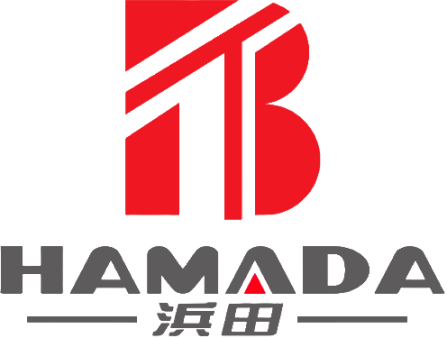How does harmonic drive work?
How does harmonic drive work
harmonic drive
harmonic drive system
In modern mechanical and robotics technology, harmonic drives have quickly become the first choice for various precision transmission systems with their high precision and high reduction ratio. However, many people do not know much about the working principle of this drive. So, how does harmonic drive work?
Core components of harmonic drives
Harmonic drives, also known as harmonic reducers, consist of three main parts: wave generator, flexspline and rigid wheel. These three parts interact with each other to achieve the unique transmission mechanism of harmonic drives.
1. Wave generator: The wave generator is usually an elliptical cam or ball bearing installed in the flexspline. It is the core of harmonic drive and generates periodic deformation waves through rotation.
2. Flexspline: The flexspline is a thin-walled annular gear that is elastic and can be deformed under the action of the wave generator. It is very critical that the number of teeth on the flexspline is slightly less than that on the rigid wheel.
3. Rigid wheel: The rigid wheel is a rigid annular gear that is usually fixed and meshes with the outer teeth of the flexspline.
Working principle of harmonic drive
The working principle of the harmonic drive system mainly depends on the rotation of the wave generator. The following are its specific working steps:
1. Wave generator rotation: When the wave generator rotates, it pushes the inner surface of the flexible wheel to undergo periodic elastic deformation, forming two main contact points (usually in the direction of the long axis of the ellipse).
2. Flexible wheel deformation: Due to the rotation of the wave generator, the flexible wheel is pressed against the inner surface of the rigid wheel at these two contact points, generating a rolling wave. This rolling wave causes the outer teeth of the flexible wheel to gradually engage and disengage with the inner teeth of the rigid wheel at the contact point.
3. Gear meshing: The number of teeth of the flexible wheel is less than that of the rigid wheel, so for every rotation, the flexible wheel will retreat a few teeth relative to the meshing point of the rigid wheel. This difference in the number of teeth produces a deceleration effect, that is, for every multiple rotations of the flexible wheel, the output shaft only rotates a few times, thereby achieving a high reduction ratio.
4. Output motion: The flexible wheel is connected to the output shaft to transmit the decelerated rotational motion to achieve high-precision transmission.
High precision and high efficiency
Harmonic drives can provide extremely high reduction ratios and excellent transmission accuracy. This is because its multi-tooth contact design greatly reduces transmission errors and backlash. Common harmonic drives can achieve a reduction ratio of 100:1 or even higher, while the transmission efficiency can reach more than 90%.
Application areas of harmonic drives
The high precision and high reduction ratio of harmonic drives make them widely used in fields that require precision control. Common applications include:
- Industrial robots: used for precise positioning and motion control of robot arm joints.
- Aerospace: used for high-precision rotation control in satellites and space probes.
- Medical equipment: used for minimally invasive operations of surgical robots and precision instruments.
- Optical equipment: used for adjustment and control of astronomical telescopes and high-precision optical instruments.
With the continuous advancement of science and technology, harmonic drive technology is also developing. Future harmonic drives will pay more attention to miniaturization, lightweight and high load-bearing capacity to meet more complex and diverse application requirements. At the same time, the development of intelligence and digitalization will promote the deep integration of harmonic drives with modern control systems to achieve a higher level of automation and intelligence.
In summary, the harmonic drive has become an important component in modern mechanical transmission systems with its unique working principle and excellent performance. Its high precision, high reduction ratio and high efficiency make it play a vital role in various high-precision application fields.
 English
English Español
Español Português
Português русский
русский français
français 日本語
日本語 Deutsch
Deutsch Tiếng Việt
Tiếng Việt Italiano
Italiano Nederlands
Nederlands ไทย
ไทย Polski
Polski 한국어
한국어 Svenska
Svenska magyar
magyar Malay
Malay বাংলা
বাংলা Dansk
Dansk Suomi
Suomi हिन्दी
हिन्दी Pilipino
Pilipino Türk
Türk Gaeilge
Gaeilge عربى
عربى Indonesia
Indonesia norsk
norsk اردو
اردو čeština
čeština Ελληνικά
Ελληνικά Українська
Українська Javanese
Javanese فارسی
فارسی தமிழ்
தமிழ் తెలుగు
తెలుగు नेपाली
नेपाली Burmese
Burmese български
български ລາວ
ລາວ Latine
Latine Қазақ
Қазақ Euskal
Euskal Azərbaycan
Azərbaycan slovenský
slovenský Македонски
Македонски Lietuvos
Lietuvos Eesti Keel
Eesti Keel Română
Română Slovenski
Slovenski मराठी
मराठी Српски
Српски
Analysis of Harmonic Drive Harmonic Drive Gearbox Applications in the Global Semiconductor Cleaning Equipment Market
In the semiconductor manufacturing industry, cleaning equipment, as a critical link in wafer processing, places extremely stringent requirements on the precision and reliability of its transmission systems.
Read MoreHigh-Precision Applications of Harmonic Drive Harmonic Gear Reducers in Semiconductor Polishing Equipment
In the front-end processes of semiconductor manufacturing, chemical mechanical planarization (CMP) polishing equipment places extremely stringent requirements on the precision and reliability of transmission components.
Read MoreAnalysis of Harmonic Drive Harmonic Drive Gearboxes' Global Market Application in Laser Processing Centers
In the field of laser processing equipment, high-precision transmission systems are a core element ensuring processing quality. Harmonic Drive harmonic drive gearboxes, with their unique technological advantages, have become a key component of transmission systems in laser processing centers worldwide.
Read More